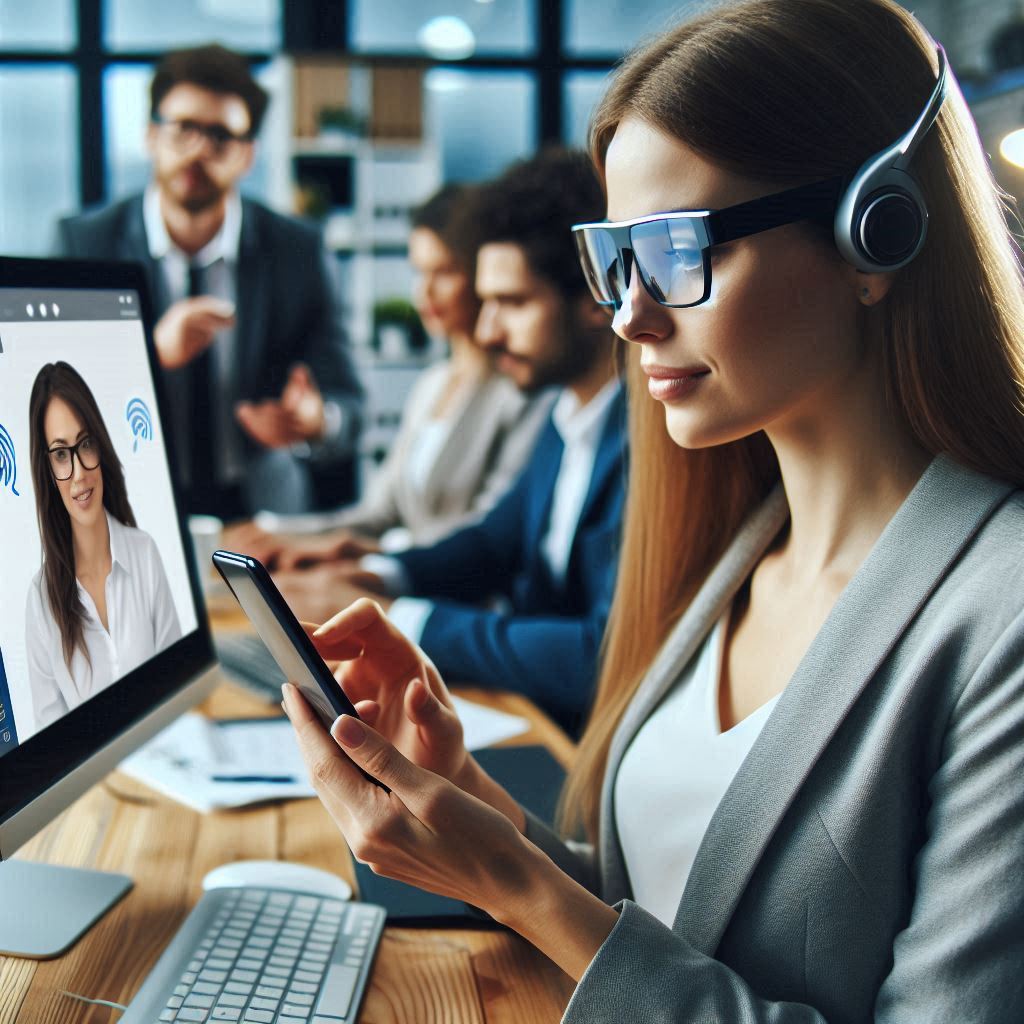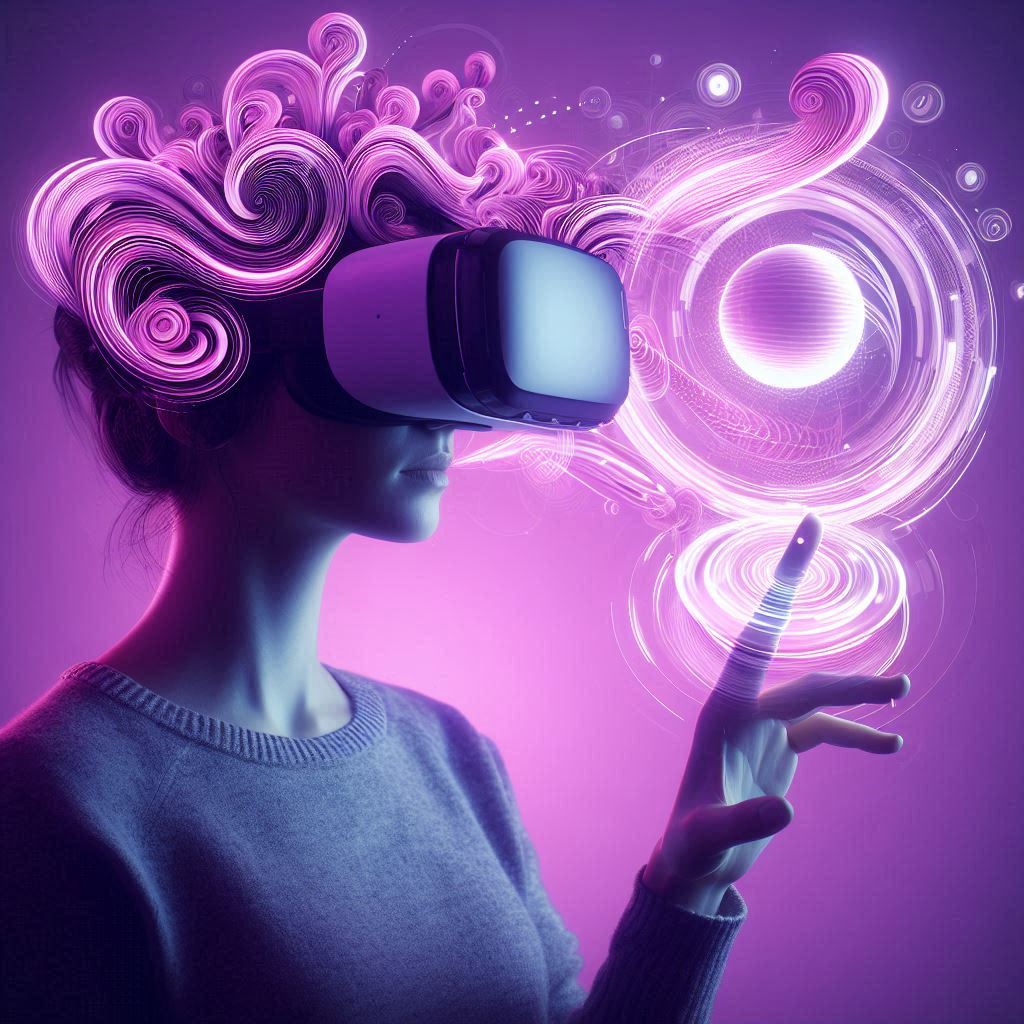
Innovative Assistive Technologies Transforming the Deaf Workspace
- Posted by Cicada Sign
- Categories Blog
- Date August 30, 2024
- Comments 0 comment
In today’s rapidly advancing technological world, assistive technologies are breaking down barriers and creating inclusive environments for all, including the Deaf community. The integration of these technologies into the workplace has transformed how Deaf and hard of hearing individuals communicate, collaborate, and thrive professionally. In this blog post, we will explore some of the most innovative assistive technologies that are revolutionizing the Deaf workspace.
1. Real-Time Captioning and Transcription Services
Real-time captioning and transcription services have become invaluable tools in workplace settings. Software such as Google Live Transcribe and Otter.ai use advanced speech recognition technology to provide instant captions for spoken conversations. These tools not only allow Deaf employees to participate fully in meetings and discussions but also create an inclusive environment where everyone can access the information being shared.
2. Video Relay Services (VRS) and Video Remote Interpreting (VRI)
Video Relay Services (VRS) and Video Remote Interpreting (VRI) have revolutionized communication for Deaf employees. VRS allows Deaf individuals to communicate with hearing people over the phone through a sign language interpreter via video call. On the other hand, VRI provides on-demand interpreting services through video, enabling Deaf employees to access an interpreter quickly for in-person meetings or spontaneous conversations. These services ensure that Deaf employees have equitable access to communication, enhancing collaboration and productivity.
3. Smart Glasses with Live Transcription
Smart glasses equipped with live transcription features are making waves in the assistive technology landscape. Devices like XRAI Glasses provide real-time captions displayed directly in the user’s line of sight. These glasses are especially useful in dynamic environments where looking at a phone or laptop screen is not feasible. By integrating live transcription into wearable technology, smart glasses allow Deaf employees to stay engaged in conversations without missing crucial information.
4. Haptic Feedback Devices
Haptic feedback devices use vibrations to alert Deaf individuals to important sounds and events in the workplace. For instance, wristbands like the Neosensory Buzz can vibrate in response to sounds like phone calls, doorbells, or alarms, providing a tactile way for Deaf employees to be aware of their surroundings. These devices not only enhance safety but also foster independence, allowing Deaf employees to navigate their workspace with confidence.
5. Accessible Collaboration Tools
Many collaboration tools are now incorporating accessibility features that benefit Deaf employees. Platforms like Microsoft Teams and Zoom offer built-in live captioning, sign language interpreter pinning, and customizable notification settings to ensure that Deaf employees can engage fully in virtual meetings and team collaborations. These features foster an inclusive work environment where communication barriers are minimized.
6. Speech-to-Text Mobile Apps
Mobile apps like Ava and Rogervoice provide speech-to-text capabilities, allowing Deaf individuals to receive real-time transcriptions of conversations on their smartphones. These apps are particularly useful in spontaneous situations where traditional interpreting services may not be available. By leveraging AI and machine learning, speech-to-text apps are continually improving in accuracy, making them a valuable tool for Deaf employees in the workplace.
Conclusion
The rapid advancement of assistive technologies is transforming the Deaf workspace, creating more inclusive, accessible, and equitable environments. By embracing these innovative solutions, organizations can empower Deaf employees to reach their full potential, fostering a culture of diversity and inclusion. As we move forward, it’s essential to continue exploring and investing in technologies that break down barriers and create opportunities for all.

I Letter in ASL
Assistive technologies are not just tools; they are enablers of inclusivity, breaking down communication barriers in the Deaf workspace.

Embracing innovative solutions for accessibility is key to fostering a truly inclusive workplace where every employee can reach their full potential.



